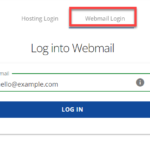In a world where over 627,000 small businesses are formed annually in the U.S. alone, it’s intriguing to ponder how many entrepreneurs began their journey without a concrete idea. Venturing into the unknown might seem daunting, but it’s often the spark that ignites innovation. When launching a new business without an idea, curiosity becomes your most valuable asset.
Historically, many successful enterprises were born from observing simple problems in daily life. Take Howard Schultz, who turned the ritual of a cup of coffee into Starbucks, a global phenomenon. By staying aware of market trends, gaps, and consumer needs, you can transform ordinary insights into extraordinary business opportunities.
- Identify daily problems or unmet needs in your community or industry.
- Research current market trends to find emerging demands.
- Evaluate your skills and interests to align them with potential areas.
- Gather feedback from potential customers through surveys or interviews.
- Create a minimum viable product and test its viability in the market.
How to Start a New Business Without a Specific Idea
Starting a business without a specific idea might sound challenging, but it can also be exciting. The first step is to look around and identify everyday problems people face. Consider what tasks are tedious or what services people wish existed. For example, you might find that neighbors struggle to find a reliable dog walker. This observation can spark an idea to create a local dog-walking service.
Another way to generate an idea is by exploring your interests and hobbies. When you pursue something you love, it’s easier to spot opportunities within that field. Think about what makes you excited and motivated. Could you turn your passion for photography into a business by offering event photo sessions? Possibilities are endless when combined with creativity.
Talking to people is a valuable tool for idea generation. Engage in conversations with friends and family, and ask them what services they feel are missing. You can also join community forums and engage in online groups to gather new perspectives. As you listen, you may discover patterns or needs not being met. By addressing these, you’re starting your path toward a successful business venture.
Lastly, keep learning and staying informed about market trends. Reading about new technologies or industry shifts can give you insights into potential opportunities. Trends like sustainable products or digital services are hot topics. By aligning your business idea with a growing trend, you’ll increase your chances of success. Staying curious is key to finding your unique business concept.
Recognizing Potential Business Opportunities in Daily Life
Spotting business opportunities in daily life requires a keen eye and an open mind. Everyday experiences are full of possibilities if you look closely. Whether it’s a long line at the coffee shop or a complicated checkout process in online stores, these annoyances could spark inspiration. By paying attention to what frustrates people, you can find pain points to address. This approach can lead to creating a product or service that makes lives easier.
It’s not just about problems; it’s also about trends. Observing how people interact with technology or changes in fashion can give you clues. A trend might be the popularity of eco-friendly products, for instance. Noticing that more people prefer sustainable goods can guide you in developing a green business idea. Keeping up with the latest news and cultural shifts is essential for spotting such trends.
Consider your own daily routine and activities. What tools or services do you wish were better or more convenient? Your personal needs can be the source of innovative ideas. For instance, if you struggle to find nutritious meals during a hectic day, perhaps there’s a business idea in meal prep services. Turning your challenges into solutions helps create something people will appreciate.
Interacting with different people serves as a great learning experience. Engaging in casual conversations can reveal unmet needs within your community. Ask questions about what friends or colleagues find lacking in their lives. You might learn about issues that you never considered. These insights can guide you toward developing a successful business.
How to Identify Market Gaps And Trends
Identifying market gaps and trends begins with thorough research and observation. Pay attention to what products or services are lacking in your local area or online. Notice what people are frequently asking for but not finding. Conduct surveys or join forums to gather insights from diverse audiences. This information helps pinpoint areas where you can make a difference.
Staying updated with industry news is crucial for spotting trends. Reading articles, watching news reports, and following experts on social media can reveal emerging patterns. You might notice a rise in demand for remote work tools or an interest in plant-based diets. Recognizing these trends early allows you to create relevant solutions. This proactive approach positions your business ahead of the curve.
Analyzing competitors also provides valuable insights into market gaps. Examine what established companies offer and what’s missing from their services. Look at customer reviews and feedback to understand what improvements people desire. Use this knowledge to fill voids left by others. Offering something unique can attract customers who feel underserved.
Another way to uncover opportunities is by experimenting with your own ideas. Test small-scale versions of your products or services to gauge interest. Use platforms like social media or local markets for initial feedback. Experimenting can reveal unexpected demands and help refine your offerings. It’s a practical approach to ensure you’re meeting real needs.
Steps to Evaluate and Validate Your Business Idea
The first step to evaluating your business idea is conducting market research. This involves gathering information about your target audience and competitors. Use surveys to understand customer preferences and needs. Analyzing this data will give insight into whether your idea is viable. It’s essential to confirm there’s demand for what you plan to offer.
Next, test your product or service with a small group. This can be done by creating a prototype or offering a limited version. Gather feedback from these early users to see what works and what doesn’t. Their opinions are invaluable for making improvements. This process helps refine your idea before a full-scale launch.
Financial assessment is another critical step in the validation process. Calculate the costs involved in bringing your idea to life. This includes production, marketing, and distribution expenses. Make sure to estimate potential earnings as well. This evaluation will help determine if your business can be profitable.
Creating a detailed business plan is also vital. Outline your goals, strategies, and anticipated challenges. This document serves as a roadmap for your business journey. It’s also useful for discussing your idea with potential investors or partners. A clear plan can lead to attracting support and resources.
Lastly, consider seeking advice from mentors or industry experts. They can provide guidance based on their experiences. Discussing your idea with knowledgeable people offers new perspectives. Mentors can recognize potential pitfalls you may have missed. Their insights can be crucial for finalizing your business concept.
Importance of Flexibility in Entrepreneurship
Flexibility is a crucial trait for entrepreneurs as it allows them to adapt to changes. The business environment constantly shifts due to new technologies and consumer behaviors. Being flexible helps you quickly adjust strategies in response to these changes. This agility can be the key to staying competitive. Entrepreneurs who embrace flexibility often find new opportunities where others see obstacles.
One way to build flexibility is by being open to feedback. Listening to customers and employees provides insights into what’s working and what needs improvement. This willingness to learn and change leads to better products and services. Making adjustments based on feedback aligns business offerings more closely with market demands. As a result, businesses can satisfy customers and enhance their reputation.
Another aspect of flexibility involves exploring various ideas and approaches. Rather than sticking to one plan, try experimenting with different strategies. This might involve testing new marketing techniques or exploring untapped markets. Keeping an open mind allows you to spot new trends and innovate effectively. Entrepreneurs who are willing to explore benefit from a broader range of possibilities.
Flexibility also means knowing when to let go of an idea that isn’t working. This can be challenging, especially if time and resources were invested heavily. However, recognizing when to pivot can save a business from downfall. Letting go frees up energy and focus for more promising ventures. This adaptable mindset is key to longevity in the entrepreneurial world.
Case Studies of Successful Businesses Started Without a Clear Idea
Many successful businesses began without a clear, defined idea. One example is Airbnb, which started as a solution to a simple problem. Its founders were struggling to pay rent and decided to rent out air mattresses in their apartment. This small, initial move evolved into Airbnb, a global home rental network. Their ability to adapt and listen to market needs was crucial.
Another interesting case is YouTube, originally developed as a dating site. The idea quickly shifted when its founders realized users wanted to upload and share any type of video. This pivot led YouTube to become the world’s largest video-sharing platform. The willingness to change direction based on user behavior was key to its huge success. It highlights the importance of flexibility and responsiveness.
Slack also had humble beginnings as a gaming company. Originally intended for internal communication during game development, the team realized the messaging tool’s broader potential. They transformed the tool into a business messaging app, which is now widely used globally. This example shows the value in recognizing opportunities beyond initial intentions. Sometimes, the most valuable assets are already part of an existing project.
Lastly, Instagram shifted from being a check-in app called Burbn. The founders noticed users were primarily interested in photo-sharing features. By honing in on this aspect, Instagram was developed and later acquired by Facebook. Listening to user engagement facilitated its remarkable growth. This evolution underscores the impact of focusing on user interests and needs.
Frequently Asked Questions
Starting a new business can seem complex, especially if uncertain about your first steps. Here, we address some common questions that can help in navigating these initial challenges.
1. What are some ways to generate new business ideas?
Generating business ideas often starts by observing your surroundings and identifying unmet needs. Engage with others to learn about their challenges and think of innovative solutions. You can also examine hobbies or areas of passion for inspiration. Combining personal interests with market demands often leads to unique opportunities.
Additionally, keeping track of global and local trends can provide a goldmine of ideas. For instance, technology advancements and sustainability practices are shaping current market needs. Attend industry conferences and workshops to network with like-minded people. These interactions can spark creative thinking and fresh perspectives on potential ventures.
2. How do I determine if my business idea is viable?
A key step is conducting market research to assess demand and competition. Use surveys, online tools, and analytics to gather data about potential customers and industry landscape. This information reveals whether there’s a genuine interest in your offering. Financial feasibility is another critical factor.
Calculate costs involved in bringing the idea to life and measure against projected revenue. Creating a prototype or running a pilot program can provide real-world insights. Feedback from customers will highlight strengths and areas for improvement before a major launch. These steps help refine your approach and increase chances of success.
3. What should be included in a business plan?
A strong business plan outlines your goals, target market, and strategies for reaching potential customers. It should detail your products or services, pricing model, and marketing approach. Knowing your audience and setting realistic goals is key to this process.
Include financial projections and funding needs to give a complete picture for investors or banks. A business plan acts as a roadmap, guiding you through each stage of growth. Regularly updating the plan ensures it reflects current challenges and opportunities. This adaptability is essential in navigating today’s dynamic business environment.
4. How important is networking for new entrepreneurs?
Networking is crucial for establishing connections and gaining insights into your industry. Building relationships with other entrepreneurs, mentors, and potential partners can open doors to new opportunities. Attend networking events, join professional groups, and leverage social media to expand your reach.
These connections can provide valuable advice, collaborations, and even funding options. Networking also creates a support system, offering encouragement during challenges. Sharing experiences with peers can spark innovations and bring fresh perspectives. Continuous networking keeps entrepreneurs informed and inspired.
5. What role does branding play in starting a business?
Branding sets your business apart by creating a distinct identity and building consumer trust. It’s not just about a logo or color scheme, but about the values and message you convey. A strong brand resonates with customers and influences their purchasing decisions.
Investing time in developing a unique brand story can improve connectivity with your audience. Consistency in branding across all touchpoints provides a professional image and enhances credibility. As your business grows, a powerful brand can ensure customer loyalty and competitive advantage. Thus, branding is integral from the very start.
Conclusion
Starting a new business without a clear idea demands creativity and persistence. By observing market needs and leveraging personal interests, innovative opportunities can be discovered. Flexibility and adaptability play crucial roles in refining and validating concepts. Such an approach fosters thoughtful solutions that meet real-world demands.
A strong business foundation relies on detailed planning, market research, and effective networking. Engaging with others opens doors to valuable support systems and insights. Building a recognizable brand further enhances trust and customer loyalty. These combined efforts equip entrepreneurs to navigate the dynamic business landscape confidently.


